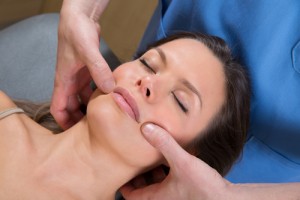Tuina
Tuina and Acupuressure

What is Tuina
Tuina is a Chinese word that means “push (tui)” and “grasp (na)”. It’s one type of Oriental bodywork that has been used in China for millennia. It’s a combination of stretching, adjustment, and deep-tissue massage along meridians, muscles, and nerve pathways to remove blockages and loosen up tight tissues. It’s often translated as “Chinese massage” but it’s much more than that. In China, tuina practitioners perform similar functions as physical therapists, chiropractors, or osteopaths in the US. It’s a special field in traditional Oriental Medicine and takes 5 years of full-time training to qualify as a tuina practitioner. By removing the obstruction, tuina practitioners try to restore free movement of qi and blood, hence relieving pain and tightness.
Tuina is frequently used in conjunction with acupuncture, cupping, moxibustion, and qigong exercise. Many tuina techniques have stemmed from ancient Chinese temples, where Kung Fu masters used the technique to treat the students who got injured while practicing martial arts. For that reason, tuina shows excellent results to treat physical injuries.
On the other hand, acupressure is more specialized with using fingers, knuckles, and sometimes toes to stimulate acupuncture points. Pressing on those specific points triggers the release of endorphins, a natural painkiller that helps to relieve pain and reduce tension.
Acupuncture and Acupressure
Some people including many acupuncturists think acupressure and acupuncture work similarly and think that the main difference is, acupressure uses fingers while acupuncture uses needles. That’s not completely true. Once you develop qi sensation, you can feel the qi movement brought about by those two therapies are quite different from each other. Acupressure (and tuina) is better at moving qi while acupuncture works more strongly in opening the points to facilitate qi movement. That’s why acupressure brings about faster results, but they do not last long, while with acupuncture, it’s more gradual, sometimes bringing the results days later, but the effects last longer. That’s why they work great together – one opens while the other pushes!
We often incorporate tuina/acupressure therapy with acupuncture to maximize the channel-opening and energy-moving effects. As in the old healer’s saying, “when there’s a blockage, pain ensues. When the blockage is removed, the pain disappears”. In neuromuscular terms, this means to remove scar tissue to promote circulation, reduce inflammation, and restore mobility. Talk about simple yet powerful healing!
Visit our office and experience the powerful healing effect of tuina, acupressure and acupuncture together!
